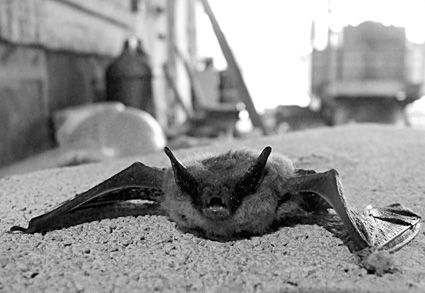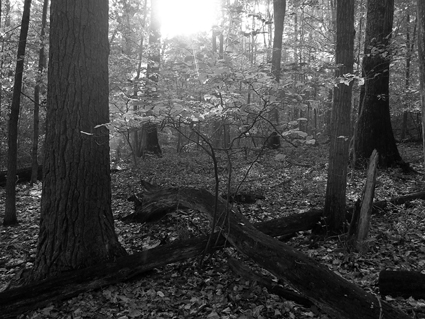Do you ever get the feeling, after waking up in the morning, that you’ve just been dreaming somebody else’s dream? I found this metal implement, or piece thereof, in the corner of the field this afternoon, and suddenly remembered that I had been acting as an informal advisor to President Bush sometime around 6:30 this morning. I had been trying to get him to shelve an anti-evolution statement he was preparing to make at an upcoming press conference, and feeling some considerable disgust at myself for the tact with which I chose my words. “You must understand, Mr. President,” I said as gently as I could, “that if you express your true feelings about this, right or wrong, that will forever color history’s perception of you as a leader. You will be subjected to derision and ridicule at home and abroad.” His eyes darted back and forth as I spoke, and it was clear he wasn’t listening.
What’s truly bizarre is that in the dream, I felt pity and even affection for the man. Well, I suppose it’s possible: emotions do have the property of changing shape according to the space they’re trying to fill. And later that day, as I turned the rusty piece of metal over in my hands, I was reminded of Gary Larson’s famously misunderstood cartoon picturing a row of amorphous objects — Cow Tools.
The “cow tools” were supposed to be just meaningless artifacts — only the cow or a cowthropologist is supposed to know what they are used for.
The first mistake I made was in thinking this was funny. The second was making one of the tools resemble a crude handsaw — which made already confused people decide that their only hope in understanding the cartoon meant deciphering what the other tools were as well. Of course, they didn’t have a chance in hell.
When I got back, my parents were sitting out on the veranda with my brother Steve. The amorphous pink object on his chest and shoulder is my niece Elanor. They were watching birds of prey migrate south along the ridge — redtails, a turkey vulture, and a golden eagle — along with enormous white sailplanes, which whistled as they flew. Elanor slept for three hours, passed from shoulder to shoulder. In the middle of supper (spaghetti with venison marinara sauce), the phone rang, and Mom said, “I’ll bet that’s Trish calling to say she’s caught an eagle.” It was.
More on that tomorrow, perhaps.
*
More hands, maybe? Textured paper?
Cracks in the concrete:
now the black snake has somewhere
to trap his loose skin.
*
The big (huge) spider sculpture which was commissioned for the opening of the Tate and dominated the Turbine Hall is back, straddling a substantial area outside the building. It is, of course, called Maman (mother). This spider is small, about the size of my camera, but was something I could relate to powerfully nonetheless.
The blessed virgin
traded in her arms for eight
flying buttresses.
*
[sketch]
A baby shark
& a cat in a bathysphere
exchange a longing glance.
*
Simply pour your favorite stout into a large glass and then pour in some cooled coffee. Experiment until you discover a proportion that suits your taste. I like a ratio of about one to one.
Served coffee with beer.
Now the grass below my porch
is turning brown.
(Back to grass again!)





































